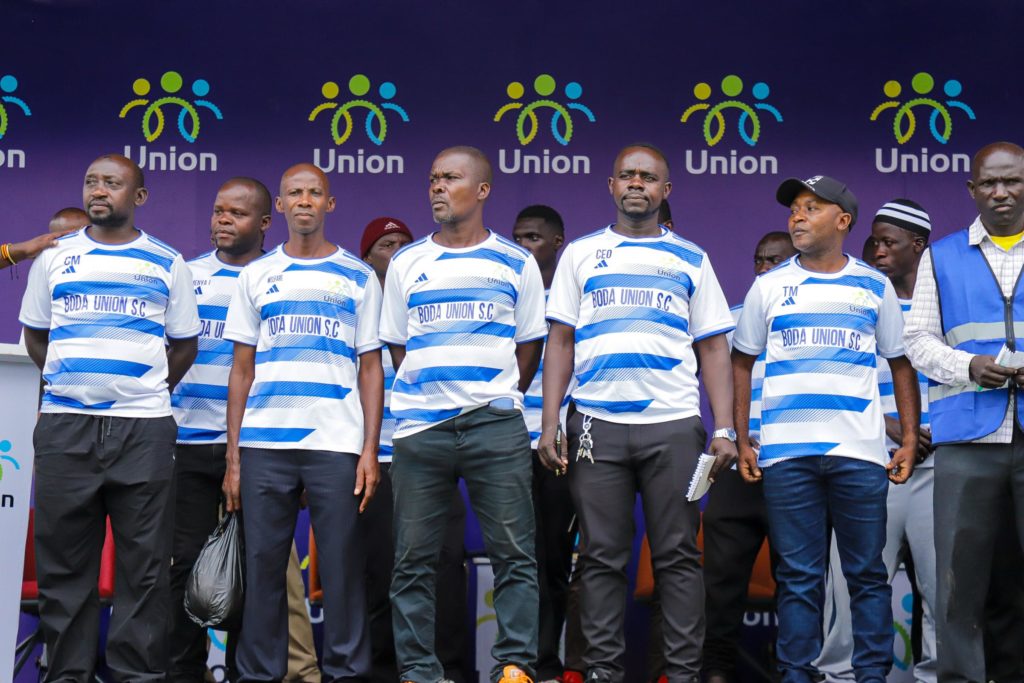While most ride-hailing startups chase market share, Union is chasing something much bigger: the financial future of Uganda’s boda boda riders.
At a launch event held last week at the Garden City rooftop in Kampala last week, Union pulled the curtain back on a surprising number of new products — not just a new driver app, but loans, land, smartphones, bottled water, and even football and boxing clubs. The company says its mission is to turn gig workers into economically empowered stakeholders.
More than 400 riders showed up in person. The message from Union was clear: this isn’t just about mobility. It’s about dignity, equity, and giving riders the tools to thrive.
A Driver App That Doesn’t Just Take, But Gives
At the heart of Union’s strategy is its new Union Driver App, a platform designed with what seems like actual rider-first thinking. Unlike many mobility platforms that skim hefty commissions off rides, Union is going lean with a 7% commission model — one of the lowest in Uganda.
New drivers also get a free helmet and reflector after just 10 rides. There’s also insurance coverage for qualified riders and the option to enroll in NSSF SmartLife savings, which helps riders start building long-term financial security.
For a gig economy often criticized for exploitation and short-term thinking, Union’s offering is almost radical.
Finance, But Make It Affordable
Union also launched boda loans with a much-needed twist: affordability.
- UGX 250,000 down payment
- UGX 7,250,000 loan value
- UGX 24,500 daily repayments for men over 12 months
- 18-month repayment window for women
The bikes come with a one-week grace period, allowing riders to settle into their new gig before the meter starts running. By offering women a longer loan period, Union is building gender-sensitive inclusivity into its financial products.
Smartphones That Practically Pay for Themselves
Staying connected isn’t optional for riders, especially when earnings, maps, and customer communication all live on a phone. Union gets that — and now offers smartphones with an ultra-accessible payment plan.
- UGX 45,000 down
- UGX 900 per day for 8 months
- 2GB monthly data
- Pre-loaded with the Union Let’s Go App
It’s a cleverly subsidized approach that eliminates the digital barrier for many riders, putting apps, navigation, and mobile money in their pockets — literally.
Yes, There’s Land Too
In perhaps its most unexpected move, Union is also venturing into real estate. Through its Village Land Loan program, riders can secure plots in Busunju (Hoima Road) or Kalagi with just UGX 250,000 down. Sizes range from 50×25 ft to 50×50 ft.
For a demographic rarely included in Uganda’s formal land economy, it’s a potentially game-changing move — turning transient earnings into long-term equity.
Water, Sports, and… Community
Union also introduced Union Mineral Water, sold at rider-friendly prices — UGX 4,500 for 12 bottles or UGX 9,000 for 24. It’s hydration with a side of logistics optimization.
And because work-life balance still matters, the company announced two community initiatives: Union Football Club and Union Boxing Club. These aren’t just for show. For many riders dealing with physical and emotional stress, structured outlets like these offer real benefits.
A Network of Strategic Partnerships
Union’s rollout didn’t happen in isolation. The company is teaming up with key players across Uganda’s digital and mobility ecosystem:
- MTN Uganda – mobile money and connectivity
- NBS (Next Media) – awareness and media
- Honda and Simba – supplying and servicing bikes
- KaCyber Technologies – backend for the Union Driver App
- Spiro and Bleep – mobility and logistics tech
These partners bring financial infrastructure, tech integrations, and scale — exactly what Union needs to sustain its ambitious rollout.
The Big Picture: What Union Is Actually Doing
It’s easy to see this launch as just another attempt to woo riders. But that would miss the point.
Union isn’t trying to be Uganda’s Uber. It’s trying to be a platform cooperative — an end-to-end economic system for boda riders that includes credit, healthcare, connectivity, housing, and leisure. It’s a blueprint for how the gig economy could work if the people doing the work were also the ones getting the benefits.

